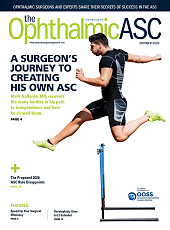The following transcript has been edited for clarity:
Hi, this is Diana DO, MD, at Retinal Physician video channel. I'm joined by Jennifer I. Lim, MD, FARVO, FASRS, today. Thank you for speaking about the landscape of neovascular age-related macular degeneration at the retina subspecialty day. Can you give us the key take-home points of your discussion?
Dr. Lim: Absolutely. At this year’s subspecialty day, I'll be talking about wet macular degeneration and basically giving the update of all the pivotal trials. Basically there have been extension studies that give us 4-year data from TENAYA or LUCERNE known as the AVONELLE-X study (Vabysmo; Genentech) and we have the PULSAR extension giving all year 3 data from the PULSAR study (Eylea HD; Regeneron). Both of these studies—as you know, Dana—show that the durability is maintained pretty much and the best-corrected visual acuity (BCVA) is stable, central subfield thickness (CST) improvements are also stable, and there were no new safety outcomes seen. In addition, we also will be discussing PORTAL, which gives us the 5-year extension from the LADDER and ARCHWAY studies, that again show that when everybody is switched to the port delivery system (Susvimo; Genentech) that the BCVAs are maintained, the CST reductions are maintained, and there's great durability. So I think it's really exciting.
Part 2 of what I'll be presenting are some of the new treatments: a new anti-VEGF, TH-103 (Kalaris Therapeutics), which has greater anti-VEGF activity and greater durability because of the heparin sulfate proteoglycan binding and increased VEGF binding as well, and I'll be talking about TKIs, gene therapy, and zifibancimig, which is the new DutaFab that is being used in the port delivery system.
Dr. Do: Thank you so much for sharing your expertise. RP








